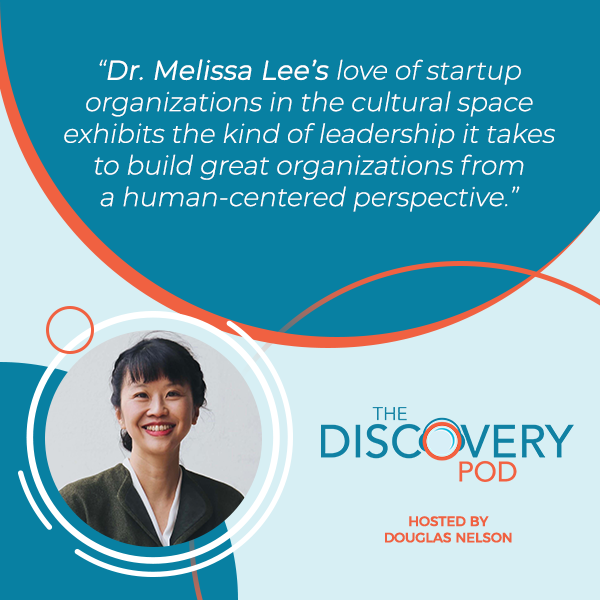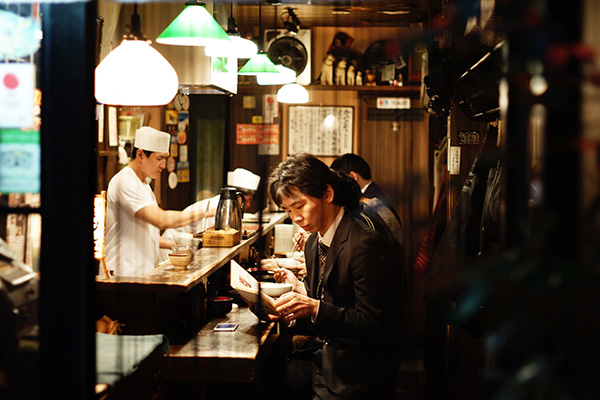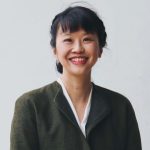
The establishment of Canada’s first Chinese Canadian Museum showcases how cultural institutions can uphold and honor the diversity of our communities. It shows the importance of representation in shaping our shared history. In this episode, Dr. Melissa Karmen Lee shares the significance of the Chinese Canadian Museum. She shares her passion for startup organizations in the cultural space. As a female leader, Dr. Lee discusses the importance of representation and setting an example for her two daughters as a working mom. She also shares her strategies for building great organizations from a human-centered perspective. Discover what Dr. Lee, as CEO, had to go through to build the museum and how much it now impacts the world. Tune in now!
—
Listen to the podcast here
Chinese Canadian Museum with CEO Dr. Melissa Lee
In this episode, we have Dr. Melissa Karmen Lee. Dr. Lee is the inaugural CEO of the Chinese Canadian Museum in British Columbia. Melissa shares her strategies for building an important cultural institution from scratch. She shares her love of startup organizations in the cultural space and the importance of this museum.
It’s the first of its kind anywhere in Canada. She also shares the importance of being a female leader of the Chinese Canadian Museum and what it means to be a working mom and set an example for her two daughters. If you’re interested in what it takes to build great organizations from a human-centered perspective, you’re going to want to read this episode with Dr. Lee. Thank you for reading.
—
Welcome to the Discovery Pod, Melissa.
Thank you, Doug. It’s a real pleasure to be here.
We’ve been looking forward to having you on the show for the last number of months. We’ve been working together quite closely on the inaugural campaign fundraising for the Chinese Canadian Museum. I haven’t had the chance to ask you this question. You’re the first CEO of Canada’s first museum for Chinese Canadians. What attracted you to that position in the first place?
Thank you so much for having me on the show. For me, that is the integral question. It is a question that I’m asked and think about a lot. For me, I think about how I begin this job in custodianship. We take over The Wing Sang Building, the oldest building in Chinatown as the first Chinese Canadian Museum. It’s a transfer of custodianship from the previous owner, Bob Rennie. It’s a historical moment for us and hopefully for many of us in Canada.
This idea that Canada has never had a museum devoted to the culture of any of its specific people or migration population and that the Chinese Canadian Museum will be the first feels very much like a historic milestone. For myself personally, I was born in Vancouver. I grew up here. I grew up going to Chinatown and getting groceries with my mother.
It is a full circle for me as well when I think about how a place that I went to in childhood will now house the first Chinese Canadian Museum. That is a job that I couldn’t turn down. It’s a museum startup. I’m particularly attracted to the very niche sector of museum startups. It was a museum startup in my hometown. These are the kind of things that I think about that attracted me. Also, I’m a working mom. I have daughters. They don’t know it yet. It’s not clear to them what a CEO is. Their understanding of a CEO is they watch Boss Baby and they think, “The CEO is the boss just like that baby is.” It’s not clear to them.
I’m guessing that’s not been your experience as CEO. You can’t tell people what to do.
It’s a balance. It’s true that you’re the boss, but you’re also not the boss. You’re accountable to a board, and that board is your boss. You’re accountable to your stakeholders if you’re a publicly held company. For us, even though we’re not a public company, we’re going to be a public museum. I am held accountable to our stakeholders, which are the Chinese Canadians that will come visit us and overall to hopefully the Canadians and the tourists that will come visit us. I hope that we put on great exhibitions when we open.

Chinese Canadian Museum: Being a CEO is a balance. You’re the boss, but you’re also not the boss. You’re accountable to a board, and that board is your boss. You’re accountable to your stakeholders if you’re a publicly held company.
I want to go back to something you said in your answer there because it jumped out at me. It is the niche business of museum startups right here in your hometown. You’ve been an academic in Hong Kong. You have led significant programs at the Vancouver Art Gallery, a very significant well-established cultural institution. You then show up at the Wing Sang. There’s nothing on the walls, so it’s time to get started. How did you get started? What were your first days like as a CEO in the museum?
My first days were the handover of the building to us. I started in mid-October. We received the keys to the building end of October. The sale went through in February, but there was a whole process of taking over. You may remember the Rennie Museum and the offices were in the Wing Sang for many years. There was a winding up process for them both economical but also in many ways emotional because it was their home and their office, the home of Rennie Museum for many years as well.
My first days were completing that handover process, which we did in a very respectful and meaningful way. There are many things to learn about the building management of an over 100-year-old building, which the Rennie team was very generous to teach us and to continue teaching us as we move towards the opening. There was getting to know staff that had been hired during the pandemic. The organization Chinese Canadian Museum was founded in March 2020, which was during the beginning of the pandemic. The staff learned to begin working again in the offices, which I spearheaded. There was the ongoing fundraising, which I’m sure you’re very familiar with, Doug, as we embarked on our fundraising campaign and as we continue to.
It has been a very busy time getting ready for the museum, the opening that’s coming at the end of June of 2023 here. One of the things that’s fascinating to me in the conversation is how intensely connected the community feels to this museum and the idea of this museum. I’m curious. As someone who has been grounded in the community and now as CEO, what have you been hearing from those future attendees, the community who’s going to look up and attend this museum? What are they telling you about the importance of CCM?
Mainly, what we’ve been hearing is that it’s a long time coming. We hear amazement that we hadn’t existed before. There are many different and varied demographic populations. We take a lot of people here on private tours to see the building and to build community support. Mainly what we hear is there’s a lot of excitement that we’re finally open. There’s a lot of anticipation, too, that’s related to the first Chinese Canadian Museum, but also a hope that we will do our part in revitalizing the neighborhood of Chinatown, bringing tourists, and bringing people back into the area.
One of the things that have been great for me getting to hear you talk about the importance of the museum is not just what it means historically, looking back at the contribution of Chinese Canadians to the nation-building that’s happened for well over 100 years. Can you talk a little bit about the role of the museum as looking not just at the past, but the present, and most importantly into the future?
As I said, it’s super important to think about the different demographics and especially demographics in relation to museum audiences. There are a lot of statistics and studies that show the majority of the growing museum population are older Millennials with their children. Those are people in their 40s and taking their kids to museums. There are lots of other education studies that show people are more likely to go back and have repeat visits to museums if they go with their parents. School trips are one thing, but it is the relationship of your parents taking you as a child that resonates and makes you go back as an adult.
Specific programs related to newer or younger generations are growth areas, and it’s a growth area in any museum. In every single museum, the exhibitions are a cornerstone, but so is education. Education is at the heart of every museum. I’m biased of course because I was the Director of Education at the Vancouver Art Gallery and I come from an education background. If you look at the growing trend of museums and museum CEOs, a lot of times, they’re reaching for leadership within the education and programs department rather than leadership within exhibitions and curatorial. It’s about audience development, reaching out to different demographics, and bringing them.
In every single museum, the exhibitions are a cornerstone, but so is education. Education is at the heart of every museum. Share on XAs you’ve been building that audience and building that connection of the museum to the community, what has surprised you with the messages you’ve heard or the conversations you’ve had with such an engaged community that cares so much about the future of the museum?
What surprises me is the openness. People have different opinions about what they think a museum should be and what they would like it to be. That’s related to different demographics, different generations, and what generation of immigration. People are open to listening to new ideas and thinking about what would be popular or interesting outside of their generation. Also, this idea of listening to the youth is important. It’s a balance.
People tell me all the time different things that they want for the museum in every conversation I have, and it can vary. Our job as a staff is to listen to all these opinions and make an overall decision about what’s best for CCM, the identity, and the brand. For us evolving going forward, how can we define ourselves as what we are, which is the new museum in Chinatown representing Chinese Canadians?
I would imagine there’s a lot of healthy tension through the idea and the exhibits that have been on at the Hung Sing, the temporary home of the museum just down the street from the Wing Sang. It is a strong pull to nostalgia for what it used to be and what it was. With some nods to what’s coming and what’s looking ahead to the future, when you open the museum on June 1st, what’s that balance going to look like between nostalgia and looking forward?
What I hear a lot from people is that nostalgia is important and the history of Chinese Canadian immigration like the gold rush and where the railway is important. What’s also important is to reflect the diversity of Chinese Canadian migrations. For me, I want to make sure that I represent Chinese Canadian migration that is more recent. It is everything from South African Chinese Canadian migration, which was a huge population in the ’50s and ’60s, to Taiwanese migration, to the fifth wave of Hong Kong to Vancouver migration in the 20th century, to Vietnamese migration. I can go on.
Everywhere in the world where there is a Chinese restaurant, there is Chinese migration. Everywhere in Canada, in every small town that one would go to, if there’s a Chinese restaurant, there’s a story behind Chinese migration. It’s a celebration of different histories, but it’s also a celebration of culture. I want us to think about different ways that we can reflect and show our history through culture, maybe using local artists, Chinese Canadian artists, and different things like that.

Chinese Canadian Museum: Everywhere in Canada, in every small town that one would go to, if there’s a Chinese restaurant, there’s a story behind Chinese migration.
It’s going to be powerful. You’re talking about the history of migration to Canada and the ways of migration. One of the things that it’s important to acknowledge is that the story of Chinese immigration to Canada hasn’t always been in bright sunny overtones. There have been some challenging times and a history of overt and absolute racism that’s been a part of that. Some of that racism we’ve seen resurface or come to the surface again over the course of the pandemic. As a head of the museum, how do you balance telling the racism it was with the challenges facing Chinese Canadians now?
It’s important to show the past and present. It is similar to what we were talking about before, this idea where you show the past and how important it is, but you also show how it’s reflected and important in present-day situations and people going about their everyday business. An example is our opening feature exhibition, the Paper Trail. That’s an exhibition that is all about how the Chinese were excluded 100 years ago on July 1st, 1923. They were asked to register certificates of identity showing that they were aliens and exclude them from proper citizenship and proper immigration.
This policy that was in place from 1923 to 1947 changed the way that Asians would not become a significant portion of the population of Canada during that time. To understand anti-Asian racism, you have to understand the past and how that past was enacted by the government through a series of laws and legislation. It helps everybody to understand that past.
To understand current anti-Asian racism, you have to understand the past and how that past was enacted by the government through a series of laws and legislation. Share on XOur museum was built as a vital part of that restitution process. The reason why we have had so much help from the province is to give substance to these formal and public apologies that were made by the governments for these systemic and legislated exclusionary practices against the Chinese communities in Canada. That is a large part of understanding how we became to be too in the Chinese Canadian Museum.
In November of 2022, you launched a series of anti-racism workshops called the Right to Be Combating Asian Hate. What was the response to those workshops?
That was my first week of working at the Chinese Canadian Museum.
Welcome. Jump right in.
That is the nature of why I love startups. You’re always jumping right in. There are a million things to do. You have to see and organize what’s the most urgent and you work your way down. During my first week of working at the museum, one of our staff members experienced an incident of anti-Asian hate. Surprisingly, it was only the second time any of the staff had experienced it. Because I have a background in teaching Chinese Diasporic Literature and Art at a university, I was able to quickly put together a workshop. I also had some experience with DEI when I worked at the Vancouver Art Gallery. I started what I called a BIPOC listening group because I worked at the VAG during the time of reckoning during George Floyd. There was a real need to have solidarity among BIPOC staff.
I’ve done some DEI stuff at the VAG. I brought that experience together along with teaching the Chinese Diaspora to do a series of workshops which were called the Right to Be. It was a good start, and a lot of this stuff is always going to be a start. It’s not like you do one workshop and then you’re done. You do one and then you figure out, “This is what the staff responds to. These are what the volunteers need,” and then we continue and think about adjustment part two and how we can work together on it.
You’ve underlined why the museum’s so fortunate to have you as their first CEO and jumping right into that. On that theme of a startup, through our work at the Discovery Group, we’ve had the opportunity to work with a number of social profit sectors we call a startup that are relatively new organizations. One of the things that’s impressed me watching you in your role is you never seem flustered. You seem like you know exactly what’s happening. No matter what the curve ball is, no matter what thing has come from outer space and landed on your desk or been put in your hands, you never seem flustered. You just take it in, process it, and move on to the next thing. Where does that calm under pressure come from?
It comes from being a mother. Honestly, there is a myth that as a woman, your children kill your career. I have to say that so many lessons from being a working mom have made me into a calmer person. It’s never as bad as you think. There’s always a larger crisis around the corner, so you got to save up your energy for the next one. When I worked in Hong Kong, I also worked at a museum startup called Tycoon, which was a $1 million project. I was there for four years.
The law is different in Hong Kong. I was seven months pregnant and I was in a construction hat doing hard hat tours. That’s completely normal there. When you have those experiences and so many people throw so many curve balls at you, it does make you more resilient and stronger. In a way, that could be a larger metaphor for the Chinese Canadian community. There’s been so many different laws, different situations, and different things enacted against the community for over 100 years. Somehow the resilience of past generations made the community stronger. These are the lessons that you enact on to the next generation that maybe make the stories more meaningful and powerful to tell.
That’s great to draw that connection and pull us back to the purpose of the museum. When you talk to other CEOs of other museums that maybe have been around for longer than a couple of years that are more established, what advice do you seek from them or what advice do you receive from those more established museums about the work you’re undertaking there at the Chinese Canadian Museum?
For me, the advice that I would give is to trust your staff. As a CEO, I have a very small staff and many museums are a lot larger with a bigger staff, but in the end, we can’t do everything. It’s not effective to try and do everything yourself. For me, the best policy has always been to try to hire the best people you can and trust them.
The best policy for an organization has always been to try to hire the best people you can and trust them. Share on XThat’s crazy enough to work. Who do you go to for advice when you’ve got challenging issues that are sitting with you over a period of time? Where do you go?
I’m very fortunate that I have quite a large board. I have nineteen board members. They all have their different specialties that assist. Some are representatives of the province, some have worked in university, some have worked in tourism, and some have worked on the city council. I’m lucky enough that all of them understand that it’s a museum startup. Anytime I need them for anything, any block that I have, they’re a phone call away.
When I think about who I ask for advice in the context of museums, it’s a small group of museums here in Vancouver and we’re quite close. I’m still quite close with my previous boss at the Vancouver Art Gallery. We collaborated with the Museum of Vancouver. We have a very close Chinatown network and neighborhood here with Sun Yat-Sen Gardens and Dragon Boat. What’s important is seeking that advice and not being afraid to ask. The very asking for advice makes you closer and builds a stronger relationship tie often with that person and that organization. It is being humble in a leadership position and is a great leadership trait.
It is true. I learned this after having been in CEO roles. I’d wish I’d learned it during them, but no one expects you to know all of the answers. In fact, CEOs that pretend to know all of the answers tend not to be CEOs for very long. That advice you’re sharing to ask questions and to seek advice is a superpower for leaders who are building institutions or leaders at any stage.
What’s important is to remain close in a way to operations, programming, or whichever your company is specializing in. I see sometimes this in some organizations where the CEO is removed. It’s often not necessarily their fault. They’re just removed through the layers it takes to speak to them directly or they’re further a distance away from the operations on the ground because of different varying reasons. In a way, also staying close to staff and understanding what’s happening or whoever can be a conduit is important as well.
It’s been fascinating to me to watch the museum develop over the last little while. You mentioned your board of nineteen. It’s genuinely inspiring to see the amount of time that many of the individuals on that board, especially the Board Chair, Grace Wong. One of the things that the tried and true rules of fundraising is if you want to encourage giving in the community, the leadership of the organization needs to step forward. She and her husband Richard certainly did with a very significant seven-figure gift to the campaign. This very activated and operational board hires you as CEO. How have you found that working pace to stay aligned with the board that is so diverse and so active?
It’s been quite good. I didn’t know what to expect coming here. I’ve had relationships with the board in my previous roles, but this is my first role as CEO. I’ve witnessed the relationship between the board and CEO in my previous roles as senior leadership. For me, at the Chinese Canadian Museum to be in this role, it surprisingly felt very comfortable.
Part of the easygoing relationship I have with the board is also what the museum is about, which is we’re all here, and the majority of the board is Chinese Canadian. They’ve been working for however many years to make sure this museum is going to be live and will be a testament to the community. Because our goals are so aligned on so many different levels, it felt very comfortable to work together toward it. Maybe a lot of that is alignment between the board and CEO. When your alignment matches, it becomes comfortable.
You’ve done such an exceptional job of coming into a board that was moving very quickly, matching that pace, and amplifying the work that they’re doing for the purposes of opening a museum. It’s been a pleasure to see you as a leader in action through that process. What advice would you give to another leader who maybe isn’t experiencing that alignment with their board? What would be in your bag of tricks or your piece of advice for the leaders that are struggling with their boards?
Communication can solve a lot. For me, it was important to begin my role with one-on-one with all members of the board to understand why each board member was devoting so much of their time and their volunteer experience. It’s a lot of time, especially our board, that one devotes to the organization. Understanding and communicating with board members helps a lot with alignment and understanding where they come from. That would be my main advice. It is communication.

Chinese Canadian Museum: Understanding and communicating with board members helps a lot with alignment and understanding where they come from.
Whatever you’re doing, it sure has worked very well. Melissa, as we come to the end of our conversation, I get to ask you my favorite question. I’m looking forward to your answer to it. The museum opens on July 1st with the Paper Trail exhibition. Beyond getting to that day and opening the door, what is it you’re looking forward to?
I’m looking forward to people being in the building again. For the longest time, people were in here because it was the Rennie offices. When we open our doors, it’s going to be a public building and it’s going to be a public museum. I’m looking forward to welcoming visitors. I’m looking forward to the building being alive again in its new iteration as the museum.
We have the Yip family reunion coming up also. Everyone has family reunions or a lot of families. The Yip family reunion, this building that we’re in was the original home of the Yips. Yip family reunions usually number around 600 people. We’re looking forward to Yips coming from all across Canada to come and visit us in July. I’m looking forward to the new exhibitions. In all museums, there is usually a 3 to 5-year exhibition schedule, which we are planning and we’re in the midst of planning. Even as Paper Trail and our new opening happen, we’re immediately behind the scenes going from 2024 to 2027.
What you’re looking forward to is bringing the people in and getting to work.
Exactly.
Melissa, it has been a real privilege to watch you take on this leadership role and do such a truly exceptional job with the museum with you, your team, and the board. I want to thank you for making time out of what I know is a very busy schedule to join us on the show.
Thank you so much, Doug. It’s been a pleasure.
Important Links
About Melissa Lee
 Dr. Melissa Karmen Lee (Ph.D) 李林嘉敏 is a visual arts and literature scholar, curator, archivist and storyteller with research interests in public art and social engagement. She was born on xwməθkwəy̓ əm (Musqueam), Skwxwu7mesh (Squamish), and səliH lwətaɁɬ (Tsleil-Waututh) territories in Vancouver, Canada. She holds degrees from McGill, Canterbury and Lancaster Universities.
Dr. Melissa Karmen Lee (Ph.D) 李林嘉敏 is a visual arts and literature scholar, curator, archivist and storyteller with research interests in public art and social engagement. She was born on xwməθkwəy̓ əm (Musqueam), Skwxwu7mesh (Squamish), and səliH lwətaɁɬ (Tsleil-Waututh) territories in Vancouver, Canada. She holds degrees from McGill, Canterbury and Lancaster Universities.
She currently holds the appointment of Chief Executive Officer (CEO) at the Chinese Canadian Museum, in British Columbia, Vancouver. From 2019-2022, she was the Director of Education and Public Programs at the Vancouver Art Gallery. From 2016-2019 she was on the founding team to open Tai Kwun Centre for Heritage and Art, Hong Kong—a UNESCO heritage site—serving as the Education and Public Programs Curator. In 2016, she was the Scholar in Residence at the David Lam Centre, Simon Fraser University. From 2008-2015, she was on faculty as Senior Lecturer at the English Department of Chinese University of Hong Kong Kong.



